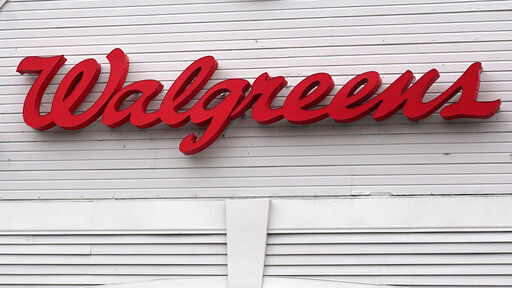A surge in demand for COVID-19 tests and vaccines helped Walgreens deliver a better second quarter than Wall Street expected.
Sales jumped as customers spent money on at-home COVID-19 tests as well as cold, flu and beauty products. Vaccines boosted pharmacy sales as the omicron surge of the virus peaked in the U.S. during the quarter.
Revenue from the company’s Boots stores in the United Kingdom also jumped as more customers returned to stores even though restrictions to fight omicron were in place for much of the quarter.
Walgreens Boots Alliance Inc., based just outside of Chicago in Deerfield, Ill., pulls in most of its revenue from retail pharmacies in the U.S., where it runs nearly 9,000 stores. The company also runs nearly 2,300 Boots locations in the United Kingdom and some in Ireland and Thailand as well.
Walgreens CEO Rosalind Brewer said in January that the company was exploring “strategic options” for its Boots business, which it acquired several years ago. That move, the CEO said, was in line with the company’s increased focus on U.S. health care. She said then that they expected the review to move quickly.
The company said today that review was in progress.
Walgreens, like main rival CVS Health, is providing more options for care in the United States as it tries to become a steady resource for customers who want to improve their health or keep chronic problems in check.
The company has spent billions on a partnership with VillageMD to open primary care practices that work with its drugstores.
Overall, Deerfield, Illinois-based Walgreens Boots Alliance Inc. reported adjusted earnings of $1.59 per share in the quarter that ended Feb. 28. Revenue climbed about 3% to $33.76 billion.
Analysts expect, on average, earnings of $1.39 per share on $33.23 billion in revenue, according to FactSet.
Walgreens also said Thursday that it was keeping its forecast for low-single digit full-year adjusted EPS growth.
Analysts forecast adjusted earnings of $5.02 per share for the full fiscal year, which ends in August. That would represent about 2% growth from last year.
Company shares slipped in pre-market trading.


